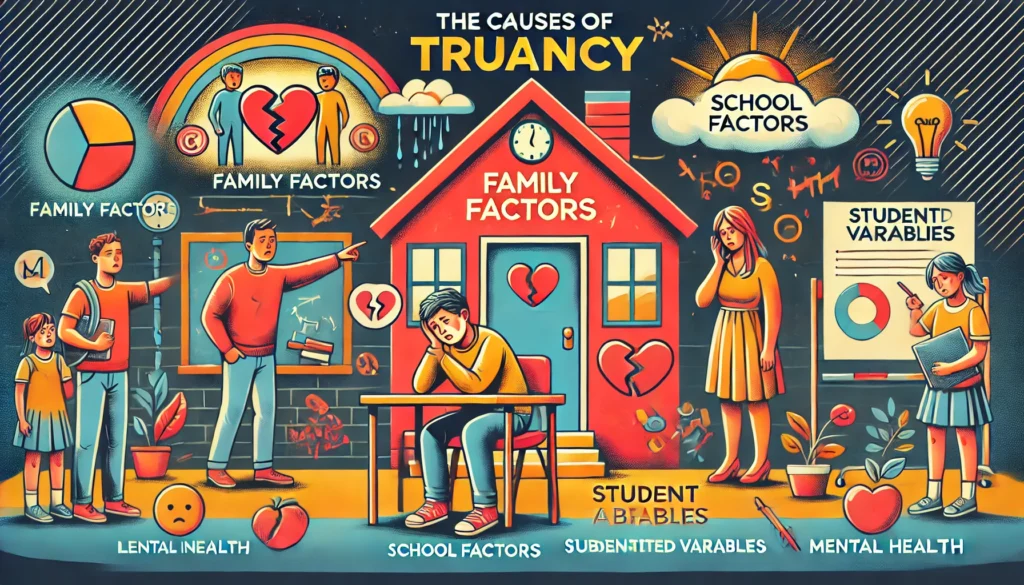Truancy is the habitual act of being absent from school without permission and has emerged as one of the most important issues faced by the schools today. It has been a constant discussion that children who do not attend school consistently perform poor in academic areas and has lower self-esteem. This is understood as “Lower quality and economic status in adult life”. It also puts the child at a high risk of criminal activity later in life.
Many researchers have explicitly identified attendance as the single most variable critical in measuring students’ achievement level and thus corrective action against absenteeism is necessary. To eliminate the behavior, it is imperative to understand the possible causes involved. Some of them are as follows:
Family factors: parent’s education, supervision and household income could be important contributory factors. For instance, concluded that the lower the father’s education, more likely the child will commit truancy. Usage or drugs or alcohol at home may lead to chaotic or disturbed family environment increasing the risk of truancy. Presence of mental health disorder in family may also contribute to it. Issues such as divorce, physical or verbal abuse and frequent moving from one place to another can also cause chronic absenteeism.

School factors: Class size, attitude of teachers, peers, inability to meet unique needs of a student, discipline policies may lead to truant behavior. Children who feel alienated in school settings, less comfortable, less valued try, and escape school. Concluded that imposing punishment may also increase truancy.
Student related variables: Physical and mental health issues, substance use and abuse, and poor perception of self may lead to absenteeism. Truancy could be an indicator of an emerging or existing mental health disorder in the child, for instance, PTSD, depression, anxiety, etc. Suggested that truancy is representative of school disengagement, detachment and lack of commitment to school, poor achievement, and low aspirations for future.
